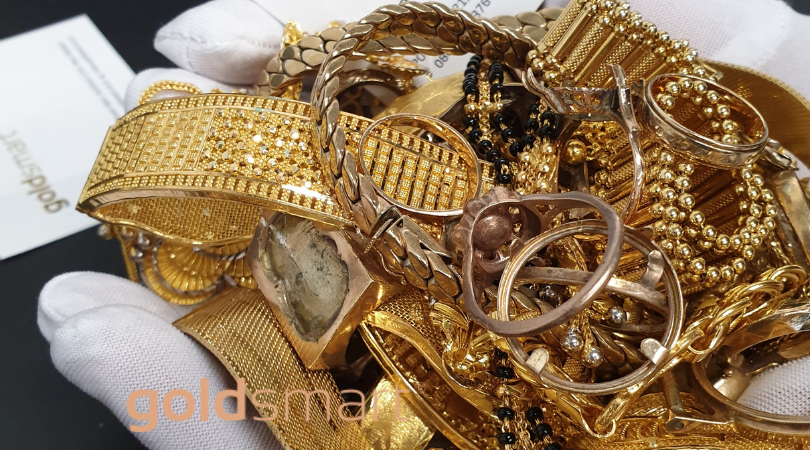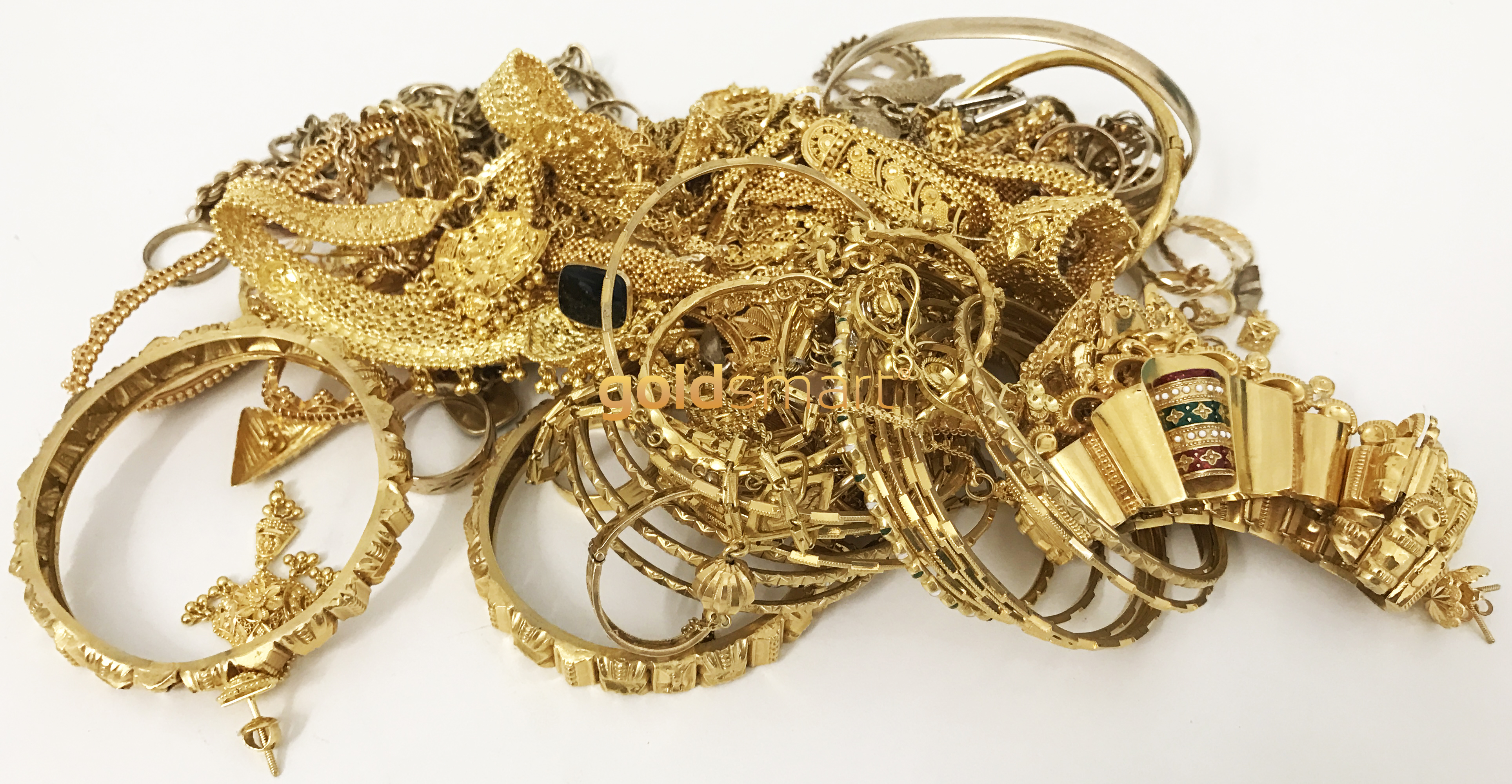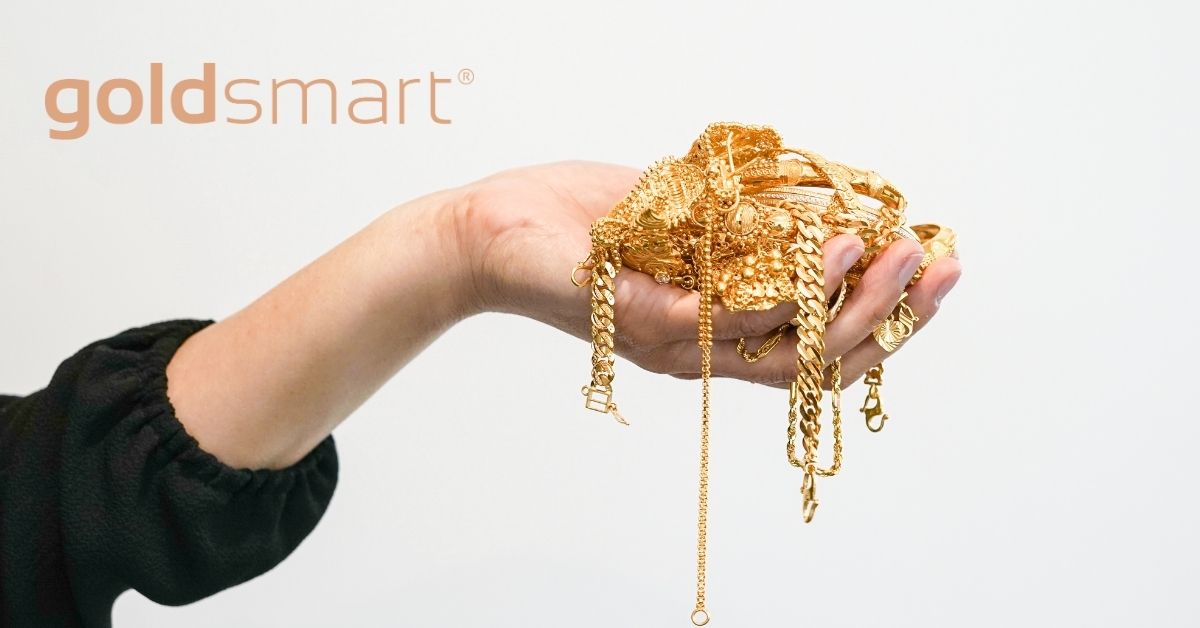
There is no question that having a good idea what kind of gold and silver jewellery one has on hand can become valuable information in the future, especially if the same person expects that at some point the same valuable precious jewellery will be sold again in the future. Ideally, one would want to receive more in value than what the jewellery was paid for originally. However, if a jewellery owner doesn’t have a good idea what’s in his or her possession, then there’s a very good chance that person could end up selling very valuable jewellery for a lot less than what it is really worth on the gold or silver recycle market. So how does one get a gold or silver jewellery value? A lot depends on what tools are being used for valuation.
The Retail Value
The price that was paid for a gold or a silver jewellery item when first bought is the retail value. That price could be through a jewellery dealer, a store, an online order, or even another private seller. But the point is the same: retail value is the cash paid for the jewellery item by a consumer without the intention of reselling the jewellery as part of a business to another consumer. That might seem like a complicated definition, but it is what applies to most people who buy jewellery for personal use.
However, retail value has nothing to do with what the gold or silver jewellery is actually worth. Why? Retail value hides a lot of what is known in the trade as markup. This is the additional pricing value that is included in the retail price that has nothing to do with the manufacturing or the supply/material value of the given jewellery. Instead, markup is pure profit charged on top of the item to make it available to a willing, buying consumer. Some of this cost goes to running the jewellery business, some of it to fees and licensing, and much of the markup goes to the business net profit, i.e. the pockets of the business seller’s bank account.
So, if one is expecting that he or she will be able to buy gold or silver jewellery for one value and then turn around and sell it for a positive gain soon after, think again. The retail value of the jewellery is marked up so high, any kind of a recent resale for quick investment would likely end up in a significant loss.
Instead, once the jewellery is bought at retail, it drops in value immediately. This price change impact is known in the market as “depreciation.” It works the same way as the value of a new car dropping as soon as the vehicle is driven off the car dealer’s lot. Depreciation reduces a jewellery item closer to its real value for the owner, oftentimes as much as 30 to 45 percent of the retail value paid.
How do retail businesses sustain such high jewellery prices for gold and silver items then? A lot of the support comes in the fact that so many different businesses are involved in getting gold and silver from a deep hole in the ground to the retail hands of a consumer. The business of harvesting gold and silver from the Earth is not a simple issue of sitting in a river and panning for it. The far large majority of gold and silver used in jewellery-making comes from industrial mining which, to put it simply, takes a lot of money to operate and pull off at a company level. Once enough is harvested to make a gross profit as a mining operation, the company then moves the raw ore into refining or sells it to companies that smelt the ore to turn it into the actual gold or silver used for jewellery manufacturing. From there additional companies take the raw metal as supply and convert it into a saleable product. That jewellery inventory is then sold to middlemen dealers who provide the same inventory to retail sellers such as consumer stores and retail jewellery dealers. This entire chain adds layer upon layer of cost, which ultimately becomes the retail value of the jewellery sold to the end consumer.

Insurance Coverage Value
The value of a jewellery item covered by an insurance policy is known as the insurance coverage value. This is a price point that an insurance provider identifies for a jewellery item in terms of what it would take to replace that gold or silver piece if it were lost or stolen. The consumer then pays a fee or premium to put the insurance in place, and the provider takes on the risk of protecting the jewellery item. If nothing happens, the provider gets to keep the premium paid by the consumer as pure net profit. If the jewellery item is indeed stolen or lost in a way covered by the insurance policy, then the consumer receives cash value to replace the item again. However, while people often think this is a great way to value gold or silver jewellery objectively, the value provided is only within the insurance policy contract. It has no applicability in any other financial setting. This tends to be a bit of a surprise for folks who don’t understand the limitation of personal insurance coverage.
The Gold & Silver Recycle Value
The third valuation is the recycle value of gold or silver. This is based on a starting point with the spot value of gold or silver and works downward based on the quality of the metal the jewellery is made out of, the costs the buyer has to address to run their buying business, and the quantity of the gold or silver involved. The other variation then tends to be how much the buyer negotiates the personal seller to reduce their price by when the jewellery is sold.
The gold and silver markets move up and down every day with speculation and investment. That in turn changes the value of precious metals. However, when focusing on how to value your jewellery, the first place to start is with the jewellery itself. If manufactured by a well-established gold or silver manufacturer, the item will have hallmarks and quality stamps on them. These markings identify the type of precious metal and quality included. Additionally, they also identify the manufacturer in some cases when it applies. You can use these markings to identify the quality involved which gives you as the owner a start in terms of categorizing the recycle value of the jewellery involved. The calculation process is fairly mathematical. The spot market price assumes the purest level of gold or silver involved. For gold, that is 24 carat quality. If the gold jewellery, however, is 12 carat, then its quality is 50 percent the value per every troy ounce. Obviously, personalized jewellery is based on standard weight, so identify the weight, convert it to a troy ounce value, and then calculate the 50 percent carat value times the number of troy ounces. The result is the raw spot market value of the jewellery item.
With the above in mind, then comes the work of finding a gold buyer who will come close to the raw value with an objective, fair recycle price value for your gold or silver jewellery. A consumer will not be paid the exact spot market value of the metal. Even gold and silver buyers have to run their businesses, pay bills and make a margin that allows them to stay in business and grow as well. So, there will be a natural markdown from the spot price of gold or silver. However, how much of a markdown is involved can be wildly different from one buyer to the next. And there are a lot of buyers out there ranging from private buyers looking to make a profit on speculation to part-time businesses managing precious metal buying on the side, to professional gold and silver buyers who make a solid business of consolidating precious metals to resell to the industrial side for bullion or bulk supply.

Cut to the Chase With a Professional Buyer
You could spend a lot of time trying to find reputable gold and silver buyers and then trying to compare them against each other for the best resale value. This will require a lot of work and, to be honest, it will cost you a lot of time and travel money. Believe it or not, there’s a better way. By simply working with Gold Smart you’re already interacting with one of New Zealand’s best precious metal buyers right from the start. Gold Smart has earned this reputation through many years of hard work, protecting their customers and personal sellers, providing safe channels for gold and silver resale, and providing one of the best and most objective resale price values for precious metals bought from consumers. In short, Gold Smart hits all the big points that make them one of the best gold and silver resale buyers to work with. And when you try your first sale with them for your gold or silver jewellery, you’re going to ask yourself why you didn’t so earlier after your first experience. Even if you decide not to sell your gold or silver jewellery, you will have a very good idea how much it is worth, why and how that was identified.